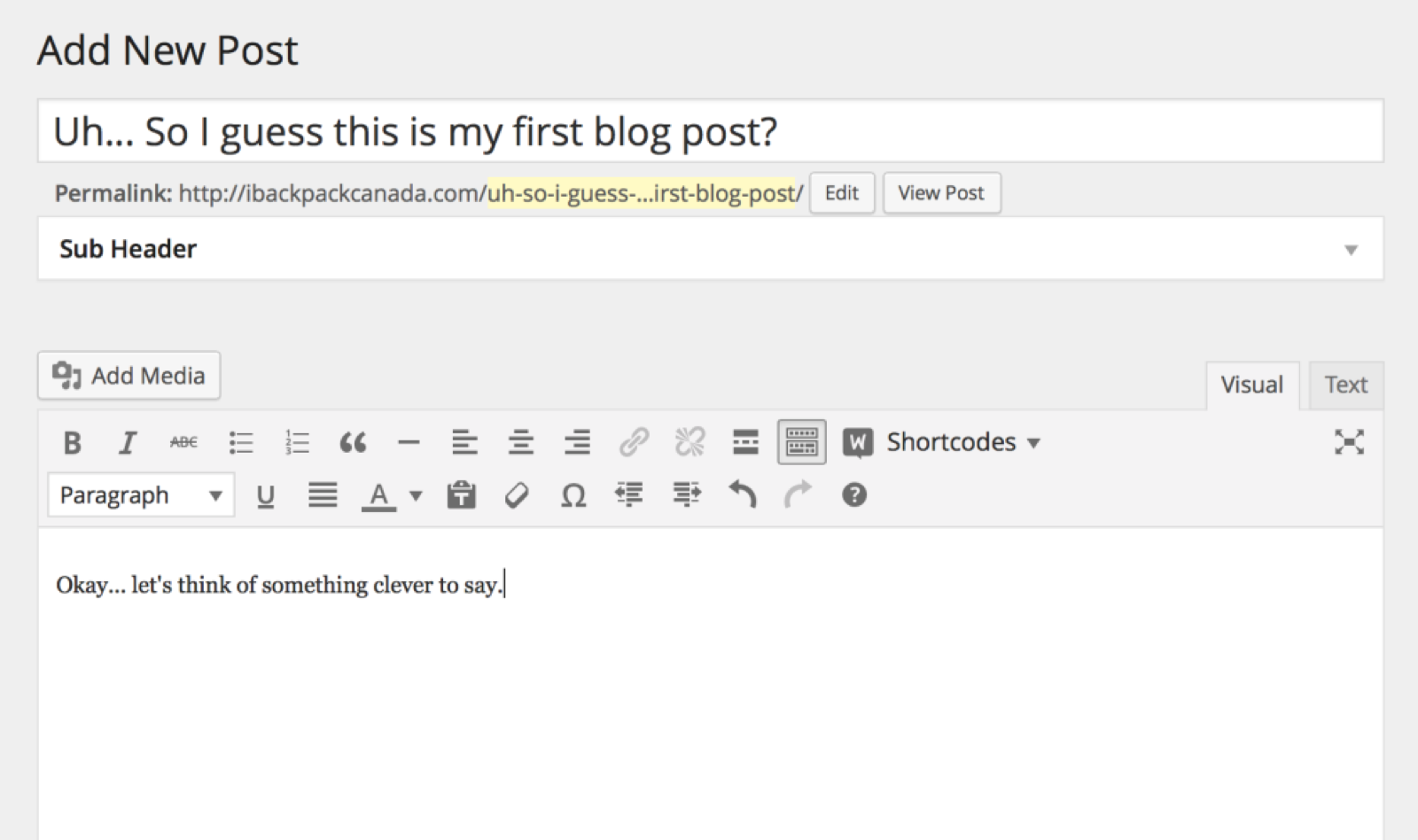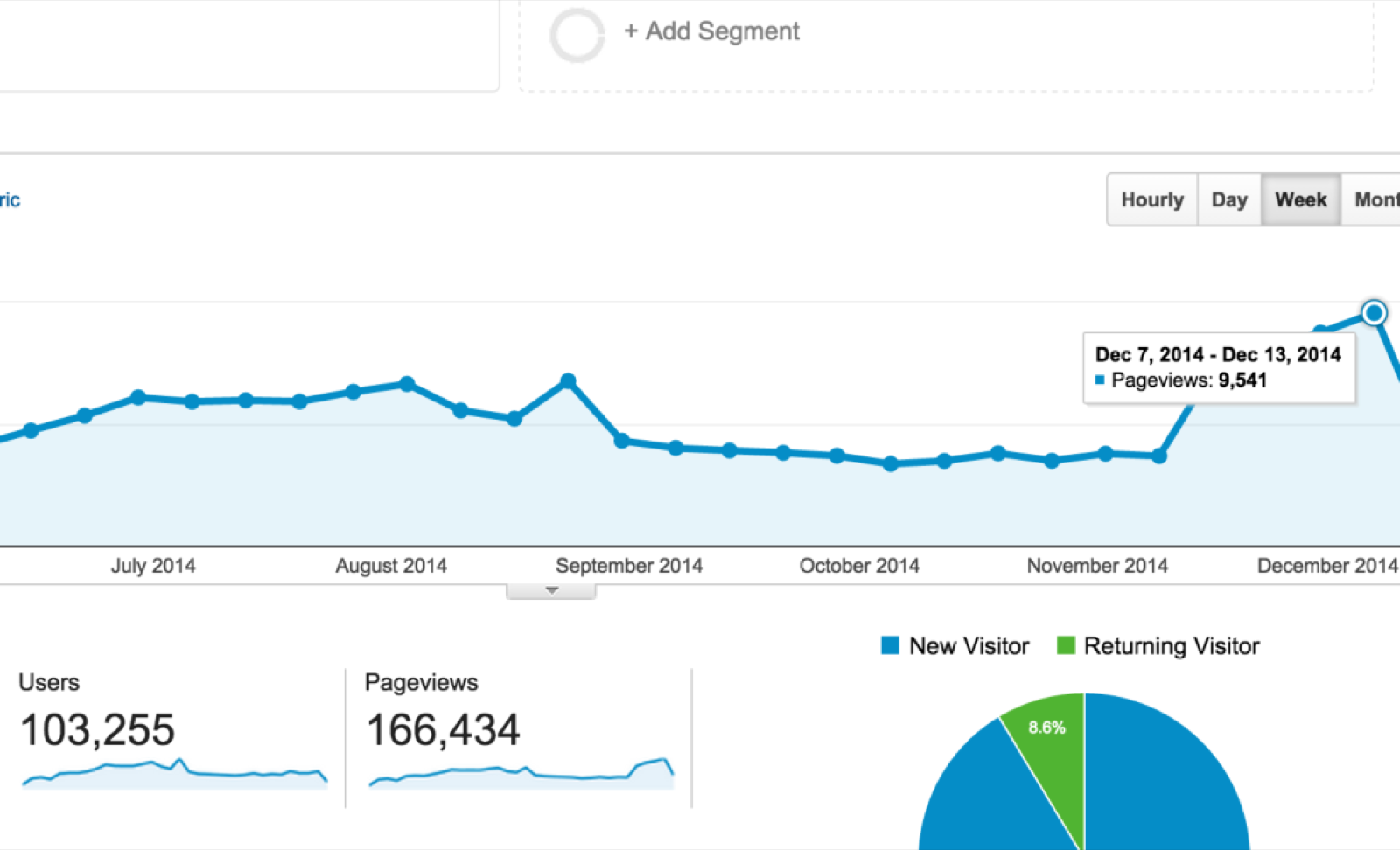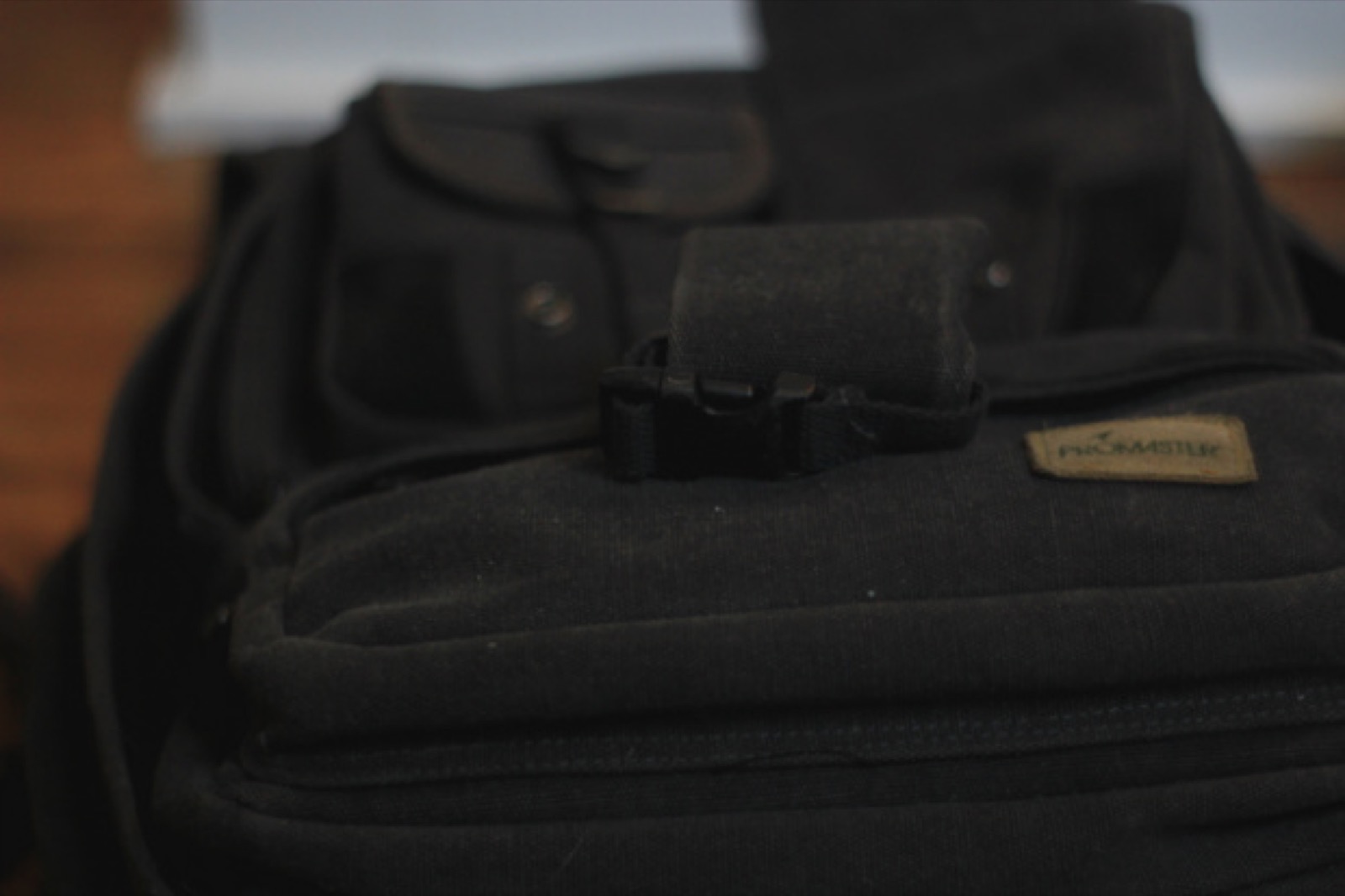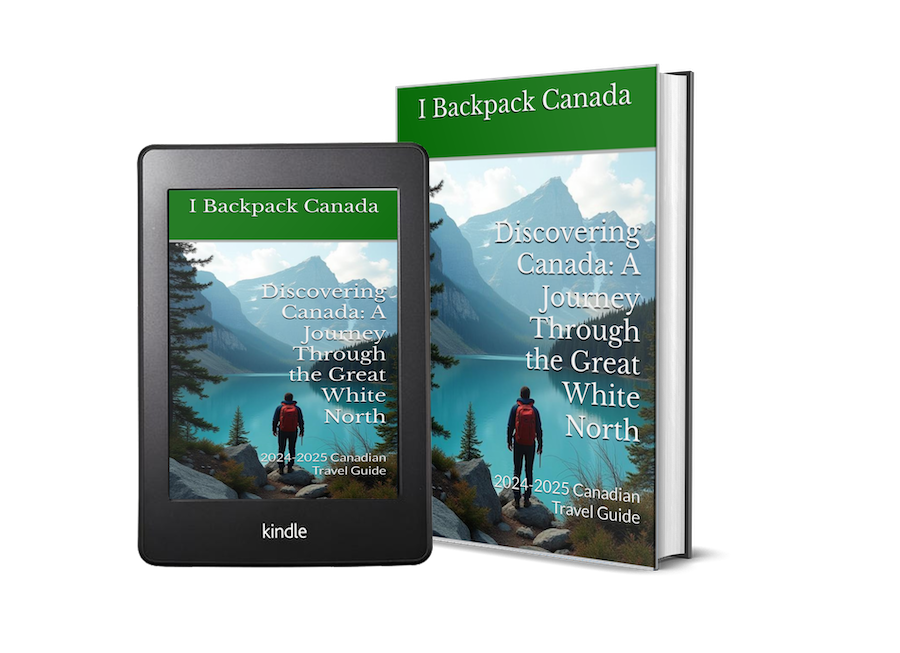How to Start a Wildly Successful Travel Blog
Posted on December 30, 2014 • 18 minutes • 3808 words
Table of contents
- Follow these steps to start a travel blog!
- Choose a Blog Name. Research it. Buy the Domain
- Purchase Hosting for your Travel Blog
- Point your Domain to Your Hosting Account
- Time to blog, but what do I write about?
- Search Engine Optimization (SEO)
- Setup Google Analytics
- But how can I get more readers to my blog?
- Reader Engagement
- Join a travel blogging community
- Monetization - Make Money Travel Blogging
- How much money do travel bloggers make?
- Start a Blog - Video Tutorial
Someone recently emailed me asking how to start a travel blog. They wanted to know, can you make money travel blogging? Is blogging a hobby or a career? What steps do I take to become successful? Which companies should I trust? I sometimes take for granted my years of experience in the blogging industry. While I might not be the most famous blogger around, I’ve made enough mistakes to know what works, and what doesn’t. I can tell you that travel blogging isn’t for the feint of heart. It’s hard work. But the memories and experiences you gain drumming up your next post is worth every ounce of stress.
Follow these steps to start a travel blog!
<img alt="travel-blog-name" src="/images/blog/travel-blog-name-1024x584.png">
Choose a Blog Name. Research it. Buy the Domain
Once upon a time it was recommended to choose a name with a relevant keyword in it. If your travel blog is going to be solely about Canada, it was recommended to include Canada in there (Hence why my blog’s name is what it is). Nowadays, search engines are smart enough not to rely on something so arbitrary. Think of how many popular blogs / websites are out there with non-relevant keywords in the domain. Smashing Magazine isn’t about Smashing things, it’s about design, development, and web. Yet they’re wildly popular in that industry. Come up with a domain name that’s catchy. Something that rolls of the tongue, and is easily recognizable and memorable. Then, most importantly, research the ever loving crap out of it. Is there somebody blogging under that name already? Is it too close to another name that could cause people confusion? Are there other sites that appear to be much more established that might make ranking high when users search “Your Cute Blog Name”? If so, that may slow down the speed at which Google starts recognizing you. Don’t just check Google, consider checking out alternative Search Engines too. When you’ve done that. Check out Twitter, Facebook, Instagram. Can you use that name to create a consistent branding experience. Lastly, assuming you’ve done your homework, hop onto a domain registrar like GoDaddy or Namecheap and check to see if the .com is available. While .ca or .net’s and even the new .travel TLD’s (Top Level Domains) are available, Search Engine Optimization best practices says to aim for .com if available. Though really any will do given you publish good content and market it right.
Purchase Hosting for your Travel Blog
Every website needs hosting. While you can setup a blog on something like blogger or live journal, if you want to take blogging serious, you’re going to want to use a self-hosted install of Wordpress. Trust me, it’s easier than that just sounded. Buying hosting from a reputable company is key here and will make your life easier in the long run.
What is hosting?
When you type in “www.yourfriendstravelblog.com ”, the domain name is being directed to an IP address. This unique identifier is tied to a hosting server somewhere at a large datacenter. Think of it like a computer, because that’s what they really are. When you load that website, there are files that make up that site. HTML CSS, images, perhaps some javascript. All those files are stored on this “computer” and are served to you when you access them via that domain name. Pricing can vary, but most entry level hosting companies will charge about $4.00 per month up to $30.00 per month. If you enter the big leagues in blogging, you’ll eventually want to go with a VPS (Virtual Private Server) or a Dedicated Server. But you really need to be able to justify it, as they are not cheap. <img alt="travel blog host" src="/images/blog/1-Bluehost.com_-1024x506.png">
Trusted Travel Blog Hosting Companies
There are countless web hosts out there. You can shop around, but in my experience as a travel blogger and web developer, my best experiences have been with these three companies:
- <strong>Hostgator</strong> - _Starts at $3.95 per month - _This company is decent. Not great, but passable. It’s who I’m currently using with I Backpack Canada. Just be warned, their customer service speed has really gone downhill since being bought out by EIG. Nasty wait times if you need a hand.
- BlueHost - Starts at $5.95 per month - A great starter host for those wanting a bit more support but still keeping things within a tighter budget. Bluehost is used by a large portion of the blogging community.
- <strong>Siteground</strong> - _Starts at $3.95 per month - _Astounding customer service. Super fast, super friendly. My new favourite hosting company that I’ve been recommending to everyone lately.
- <strong>WP Engine</strong> - _Starts at $29.00 per month - _More expensive, but you truly get what you pay for here. I’ve seen semi-slow sites turn into blazing fast sites when migrated onto their server.
<img alt="How to Start a Wildly Successful Travel Blog" src="//bluehost-cdn.com/media/partner/images/ibackpackcanada/488x160/bh-ppc-banners-dynamic-488x160.png"> (disclaimer: the hosting links above are affiliate links, allowing me to make a small percentage off any sales I send to them. If you don’t want to support me, that’s okay. But you’re going to have to google their names on your own.) <img alt="dns-settings" src="/images/blog/dns-settings-1024x693.png">
Point your Domain to Your Hosting Account
When you purchased a hosting account, you’ll be given your hosting setup details, including two important unique addresses, called your “NameServers”. You’re going to have to login to your domain registrar account (i.e. GoDaddy or Namecheap) and edit your DNS settings on your-domain-name.com. In that screen you’re going to find two input fields where you can paste each of the unique name server addresses. This instructs your new domain to point all DNS settings, including A records (the record that points your-domain-name.com to the hosting account), MX Records (these control your email for [email protected] ) and a few other unneeded DNS settings that you shouldn’t ever need as a blogger. Once those are saved, it can take upwards of 24 - 48 hours for your domain name to start being directed to your hosting account. Though in my experience it’s rarely over 8 hours, but maybe I’m lucky. Until your domain propagates (i.e. the settings are finished doing their thing) you won’t be able to touch your website without the help of a hosts editor like Gas Mask. I’m not even going to go there, but if you’re advanced enough to edit your hosts file, you probably don’t need this how-to. So it’s better to just wait till your domain is ready.
Setup & Install Wordpress
Your Travel blog is going to need a Content Management System (CMS). Something that lets you login and edit posts, and schedule them or publish them. Your posts, images, and content are all stored in a database that is accessible from a fancy screen that looks a bit like Microsoft Word meets… something way sexier than that. There are other blog CMS’s out there, but Wordpress is king, as it has the highest adoption rate, largest group of community developers, and a fairly low barrier of entry to it. WP engine comes with Wordpress pre-installed, but both Siteground and Hostgator and nearly all other web hosts will require some setup. Don’t worry though, it’s super easy!
Get Help
What many people don’t realize is that Tech Support staff at hosting companies will happily perform this setup for you. So hop on their live chat, ask them to install Wordpress on the domain name your-domain-name.com and sit back.
Do it yourself
If you’re more hands on and want to learn how to do this yourself. Just open Cpanel, look for “Wordpress” (or Fantastico if your host is ancient), and follow the installation instructions. Login to your-domain-name.com/wp-admin and get blogging
Install a Wordpress Theme
Okay so when you go to your-domain-name.com you can now see the ugly black/white/green default wordpress theme. Out of the box, Wordpress comes with a couple of basic themes. They aren’t fun. So you’re going to want to change those. Wordpress has a free theme repository that allows you to search, test, and install themes, direct from your Wordpress Dashboard. While you can easily hire a Web Designer to do this part for you, if you’re on a budget, consider looking for a blog theme that suits you at:
If you’re going to go this route, just be prepared. You’re going to have to be ready to read the theme documentation in order to get your theme setup the way they have it in the demo. 
Time to blog, but what do I write about?
This is the million dollar question. Trust me, I ask that question to myself all the time. If you want to be an SEO whiz, sure you can do research at BuzzSumo and discover which content is hitting the mark with people. But take it from me. If you’re not writing about something you care about. It will be like pulling teeth. Find something you’re passionate about. Camping, culture, food, a destination. Then build post ideas around those topics. You might not win a pulitzer prize with a list style post, but they can really help speed things along. Some post ideas include: [et_bloom_locked optin_id=“optin_4”]
- List Style Posts (i.e. 10 best Foods to Try when Visiting X)
- Essay Style Posts
- 1st Person Stories & Anecdotes
- Share a Youtube Video
- Photo Essays
- How to posts
- Advice Posts
- Weekly Posts (i.e. Foodie Friday, Photo Wednesday, Video Sunday)
Your first dozen blogs aren’t going to be that incredible. Not the end of the world. I look back on my older posts and cringe so very hard. But if I hadn’t learned from those, I wouldn’t be where I am now. Just get some words out on paper. Have a friend or loved one proof things over, and just hit publish! The beautiful thing about blogs, is if you don’t like it, you can remove it later, edit it, revamp it, or correct yourself - as I often find myself scrambling to do when readers comment on me confusing “traveller” vs “traveler”. C’est la vie!
Search Engine Optimization (SEO)
It’s going to be tough to summarize SEO, as it’s so very huge and so very complicated if you don’t have a basic understanding. Before we get started, lets learn some terminology. Organic Traffic: Traffic that comes naturally via search engines, such as Google, Bing, Yahoo, etc. Direct Traffic: Users that manually type in your-website-name.com Referral Traffic: Traffic that comes to your site via Facebook, Twitter, Linked In, Email Marketing, etc **Backlink: **_A hyperlink from one site that points “back” to your website. _ 
Setup Google Analytics
When you create your blog, you’re going to want to setup Google Analytics right away to monitor your traffic. Google Analytics will give you valuable insights into which posts on your blog are performing best, how your site is performing month-to-month, whether you have a “busy season” or not, and can provide clues about what type of content your readers really crave. For instance, some of my most popular blog posts include my post on Canadian Junk Food
, Bungee Jumping in Canada
, My Ultimate List of Summer Music Festivals
, My 13 Reasons to Ditch Airlines for VIA Rail
, and my Westjet VS Air Canada VS Porter Airline Comparison
. By seeing that I can see that readers like unique, quirky, curious, informative, and adventurous posts. Which makes me more inclined to seek out posts that might fit those post styles. That isn’t to say I’m not going to blog about other things. I once wrote a post on How to Make a Poutine
, which for some reason took off and is not far behind those posts. Live & learn and don’t be afraid to get out of your comfort zone. What’s really cool is that by looking at Google Analytics, I can see that certain types of posts draw in more organic traffic, some draw in more referral traffic from social media. The biggest thing you should do is just write. Write as much as you can about a certain topic. Use those keywords you’re trying to rank for in a natural way. Share your content on social media. Email family to share it. Encourage readers to share with fancy social sharing plugins. 
But how can I get more readers to my blog?
So you’ve written 50+ posts and just aren’t seeing your organic traffic numbers increase on Google Analytics. How can you please the search engines more and find more readers? It’s all about the back links! This is where you need to be creative. Do:
- Request to guest blog on other blogs in similar fields
- Share your blogs URL in your social media, Facebook, linked in profile
- Submit your blog to blog directories (just avoid the spammy looking ones)
- Ask to be included on readers blogrolls
- Reach out to other bloggers and ask to be interviewed or to guest post
Don’t:
- Don’t buy backlinks, if you get caught Google can and will delist you
- Don’t Spam people / bloggers with copy & paste emails, it’s annoying.
- Don’t just share only your own posts on social media. Share others as well, and in turn they may repay the favour
_If you want to learn more about SEO, check out the Beginners Guide to SEO by Moz. _
Reader Engagement
Writing posts that are easily shared, and easy to digest is key. Try to break up your posts with headers, images, and block quotes. People are more likely to share your content if its not only informative, but visually pleasing and easy to skim. You’re going to want to build a following. Give people the ability to follow you and your posts.
- Sign up for Twitter, Facebook, Instagram (down the road you can sign up to more, but start small)
- Meet other bloggers online and in person
- Talk to your readers. Thank them for RT’ing. Stalk them a bit and ask them about a photo. Be you.
- Create a mailing list on Mailchimp or Aweber - this is key! Email marketing campaigns, while very much not the sexiest part of the marketing world, are still highly effective. Share your latest posts via RSS, encourage active members to enter a contest, share content, or just say hi to your most loyal readers!
- Reply to comments & accept constructive feedback.
- Avoid fighting fire with fire in comment flame wars, no matter how bad your day is going. Take it from me, you never feel like a winner after stooping to their level.
Join a travel blogging community
Consider checking out the Professional Travel Blogging Association . I was a part of the initial 50 bloggers that founded this organization. It aims to put bloggers in touch with media and industry and is a great way to make contacts in the travel blogging industry. I’m not nearly as active in “the community” as I used to be. But I think that just comes with the territory when you’re a lean towards the intrinsic side of the spectrum and don’t drink like a fish as many other bloggers do.
Monetization - Make Money Travel Blogging
Can you make money travel blogging? Absolutely! Will you be stinkin’ rich? Highly unlikely. Blogging isn’t a lucrative business to get into. Until you’re getting at least 10,000 - 15,000 unique visits per month, I wouldn’t even bother trying to monetize your site. It’s a lot of work, and you’d be better off just looking for paid writing gigs.
Google Adsense
Google Adsense gives website owners, bloggers, and publishers an easy way to place relevant, targeted ads on their website. They pay out based on impressions and clicks. I’ve read that on average most people receive a 0.1 - 4% CTR (Click-thru rate) on most ads. Meaning it takes a very large amount of visitors to make those ads pay out anything worth writing home about. Don’t expect big money from them unless you’re really bringing in the traffic.
Affiliate Links
Bloggers (including myself) regularly share affiliate link URL’s to tell companies “hey, dibs on a cut of that sale because I sent them to your site and they purchased that product because I sent them there”. It’s considered an incentive to publishers to share their products or services. I recently added an entire Affiliate Store on my blog, showcasing travel products I use, love, and/or trust that link up to Amazon. Any click throughs that turn into sales, Amazon cuts me in at 4% of the sale(though I can work my way up to 6% if I make enough sales per month). You might think “Wow, cool idea, he must be oprah rich”. Again, nope. I don’t want to go into too many details as I believe its against their TOS, but let’s just say they’re I’ve never made more than a six pack of beer off of them in a month. If you catch my drift.
Advertorials
The somewhat shadier side of publishing. Brands line up with bloggers, and say something along the lines of “We’d love to publish a piece on your site, and we’ll pay you to let us, all that we ask is you let us link back to our site”. The content they provide can be anywhere from mediocre to terrible, depending on the advertiser. I equate these pieces to “full page spreads” in magazines. They help pay the bills, but aren’t the publishers most proudest way to make money.
Text links & Banner Ads
Some companies are willing to pay for text links or banner ads that link back to their website. Aligning with relevant industries is key. When your blog gets popular, you’ll be surprised how many weird requests you get. I’d advise avoiding them unless you really need the money, and always vet the link. Ensure if you’re going to be sending readers somewhere, that the product / service they’re linking to isn’t something you wouldn’t use yourself.
Free or Comped Travel
I wasn’t sure if I was going to touch this. Because its awkward to say the least. I’ve ranted about it to friends and co-bloggers in the past over beer. Free travel is awesome. But does it skew your writing? Are you more likely to give a positive review of the tour, trip, experience, is free? Will you even say anything bad if it’s free? What if the hand that feeds stops feeding based on a bad review? What then? Can you travel without the help of freebies? Where do your own personal ethics lie? I’ve taken free travel in the past. I’m not ashamed to admit that. I feel that I earned my reputation as a successful Canadian travel blogger, and was regularly invited to join trips and cover events, and destinations. I’m always sure to share on my blog which pieces were covered by thanking the organization. Does it skew my writing? I try not to let it. But it’s certainly the grey side of the travel industry. Many, in fact, most bloggers will take some free tours, or free travel in some capacity. Does it effect their writing? Maybe not. But I know first hand that there were times where I felt obligated and encouraged at some points to not include bad reviews. So I encourage you to decide upon a stance before you find yourself in this dilemma. Interested in more of this grey area? Consider reading Smile When You’re Lying: Confessions of a Rogue Travel Writer by Chuck Thompson. (Disclaimer: Yep, that’s an affiliate link)
Ebooks / Travel Guidebooks
Many travel bloggers expand outside of the travel blogging circuit and begin releasing their own eBooks. Sometimes they’re expanded versions of blog posts, other times they’re unique stories, how-to’s, or advice-style articles compiled into one thought out PDF. Prices vary from $10 - $40 depending on the quality and amount of content. Ebooks were rare to see for travel bloggers a few years back, but lately it seems like every other blogger has an ebook they’re selling. I’ve bought a few of them in the past, but having never launched an eBook myself I can’t speak much on sales. But I suspect that they require a larger readership in order to make them worthwhile.
How much money do travel bloggers make?
That depends who you talk to. I heard a couple years back at a blogger/writer conference that the average travel blogger makes approximately $3,000 per year. No, I’m not missing a 0 there. Three-thousand. That’s it. While yes, there are some very famous bloggers out there that have millions of followers, making butt-loads of money (by butt-loads I just mean a living wage), the majority of bloggers won’t make more than a few extra per year. The majority of travel bloggers have other jobs that allow them to travel. I’m a web developer by day, blogger by night. I have friends that provide content writing for businesses, others that teach english, some that bartend, pickup odd jobs, or have jobs that allow them to work remotely. Travel blogging is not a lifestyle of riches. It has it’s perks though! You get to see the world, report on your experiences, share photos, meet new people, and explore when you might not otherwise have done so. You earn some tremendous memories from becoming a travel blogger. If you’re in it to make money, I’d advise you to re-adjust your expectations and treat this as a side-gig first. Give it a trial. Set a goal to go hard for 1 year. See if it’s for you. Most travel blogs don’t make it past the 6 month mark, or fizzle out when the writer goes domestic. I myself have nearly quit on several occasions. Am I rolling in it? No. Does it help pay bills? Ahhh, barely. Most goes towards student loans, but I can say without a doubt that I’m 3 long years away from paying those off, that’s in addition to having a full time job that pays well.
Start a Blog - Video Tutorial
This video tutorial on how to start a travel blog covers off just about all the bases. While he may be using BlueHost , Hostgator or Siteground has a near identical setup.
Let’s Recap on Resources to Check Out
Just a reminder that this post has a few affiliate links peppered throughout. Any sales I send to these companies that I use often, they provide a finders fee in the form of a small percentage of the sale. If you’d rather not support I Backpack Canada, just google those business names and proceed as usual.
Questions about starting your own blog? Leave me a comment below or drop me an email !
<img alt="Sign up to Hostgator Hosting" src="/images/blog/WordPress-336x280.gif"> [/et_bloom_locked]





